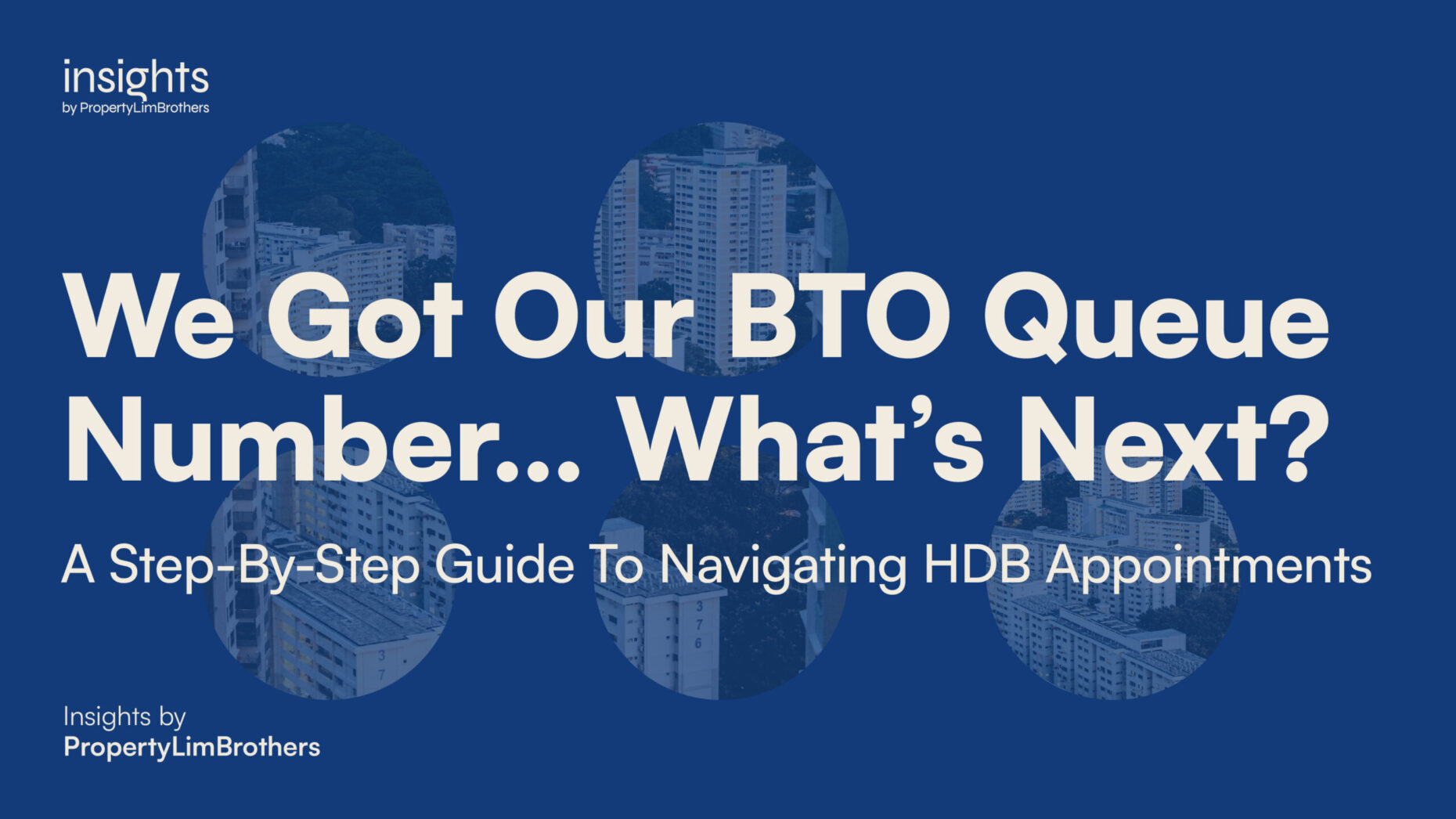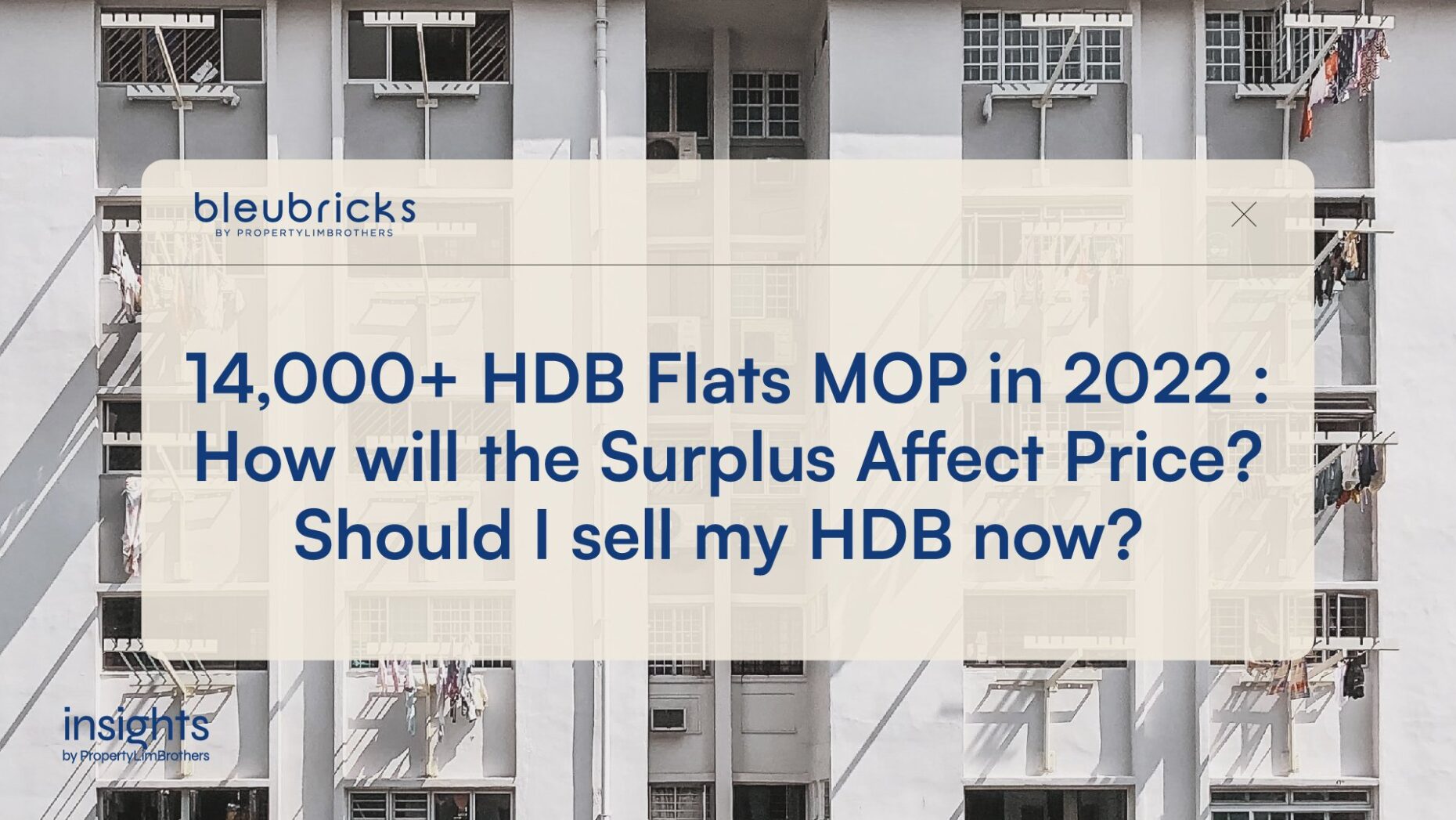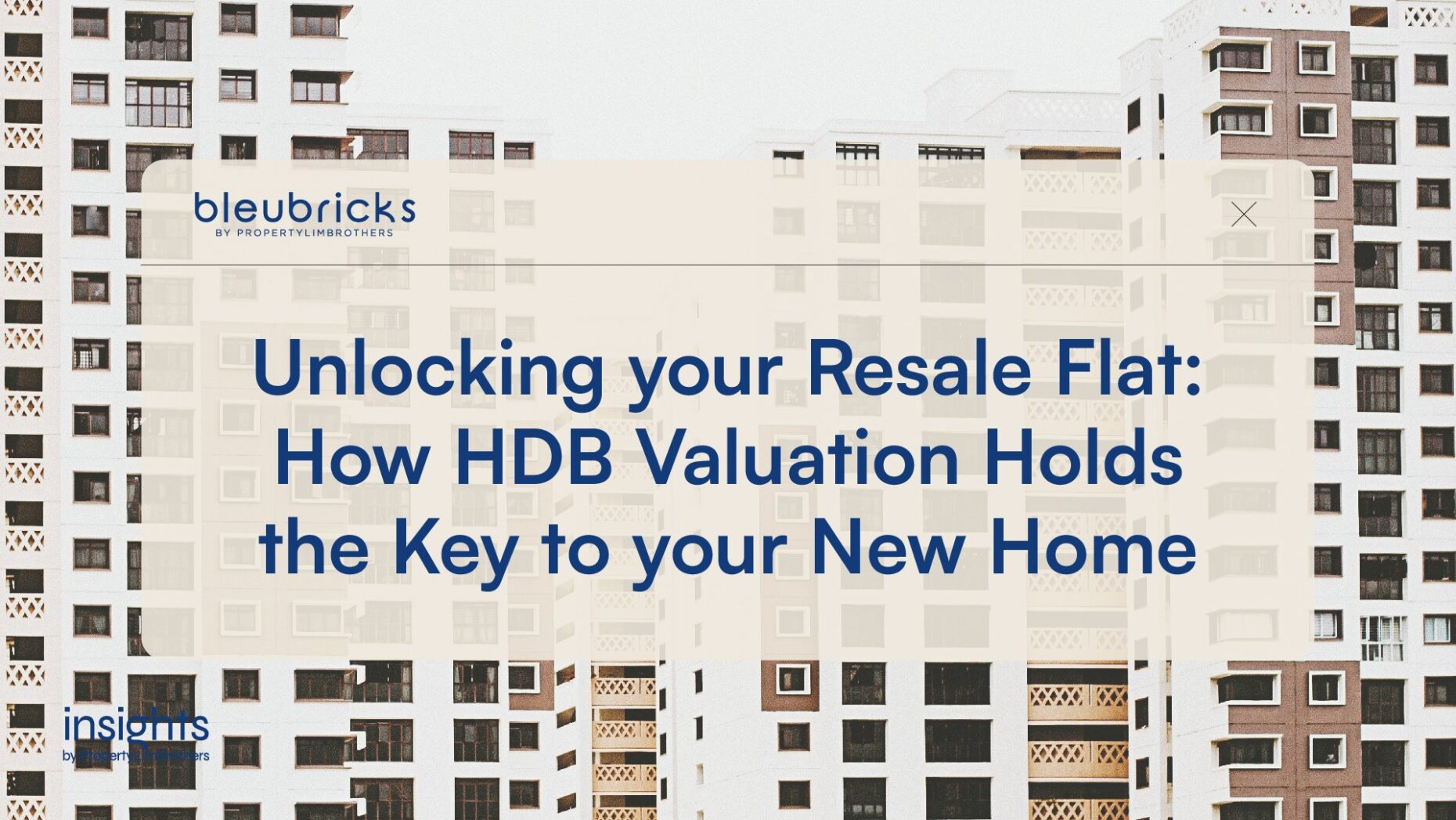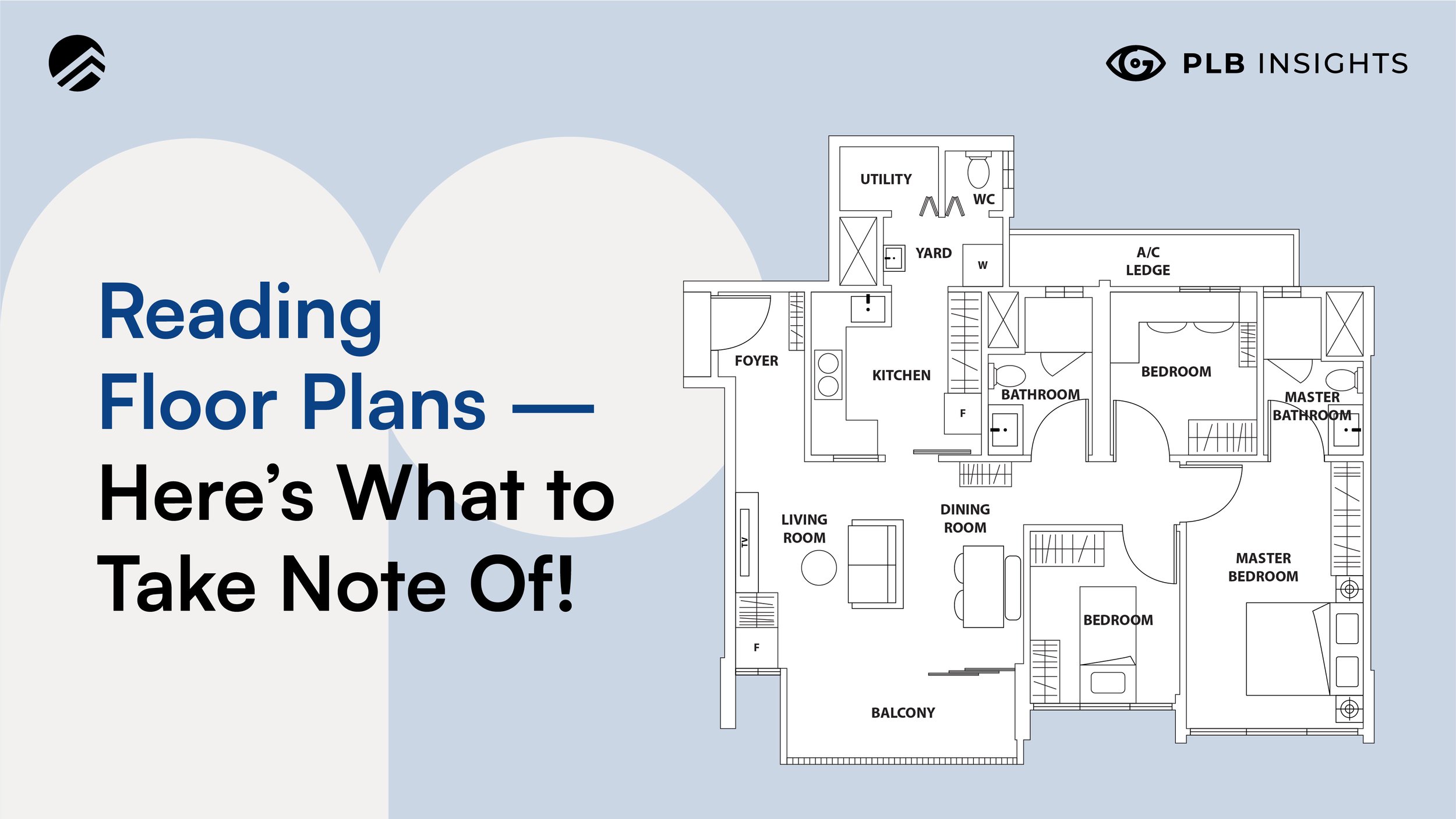
Do you see the signs?
While floor plans were meant to provide clarity of the structures of the house, the minute differences between lines and symbols make it difficult even to make sense of it, let alone use it to your advantage.
Getting a bird’s eye view removes the optical illusion, allowing you to envision future renovation potential better and if the layout is suitable for your living needs. After all, every centimetre of the house counts. The last thing we want for you is to have an inefficient layout.
Walls – The lines on the paper
Not all walls are built the same – some walls are solid structures, built for the foundations of the building; others are “fake” walls, used to partition the spaces in your home; and some walls in your house could be the facade of the building.
Here’s how to differentiate them on the floor plan!

1. Structural / Load-bearing walls (Cannot Be Demolished)
Structural walls are denoted by thicker, bolder lines and are sometimes shaded in for more clarity.
These load-bearing walls responsible for the structural integrity of the building cannot be hacked down. Thus it is important to note where they are, as they set the boundaries of future renovations.
In an HDB, the walls surrounding the bomb shelter (aka. storeroom) are typically structural walls.
2. Gable-end walls (Cannot Be Demolished)
Gable-end walls are unique to corner units and are walls with awnings on the exterior to protect the home from the blazing Singaporean heat.
These walls are represented by a pair of lines, with a strikethrough in between the pair.
Likewise, gable-end walls cannot be demolished.
3. Partition / Regular walls (Demolishable)
The thinner pair of lines represent partition walls.
Be it for an open concept kitchen or to replace with glass partitions for a more spacious feel, these walls can be demolished for your renovation ideas.
However, that is provided that you obtain HDB’s written permission, and in the case of Condos, MCST and BCA approval.
Doors – The curves on the paper
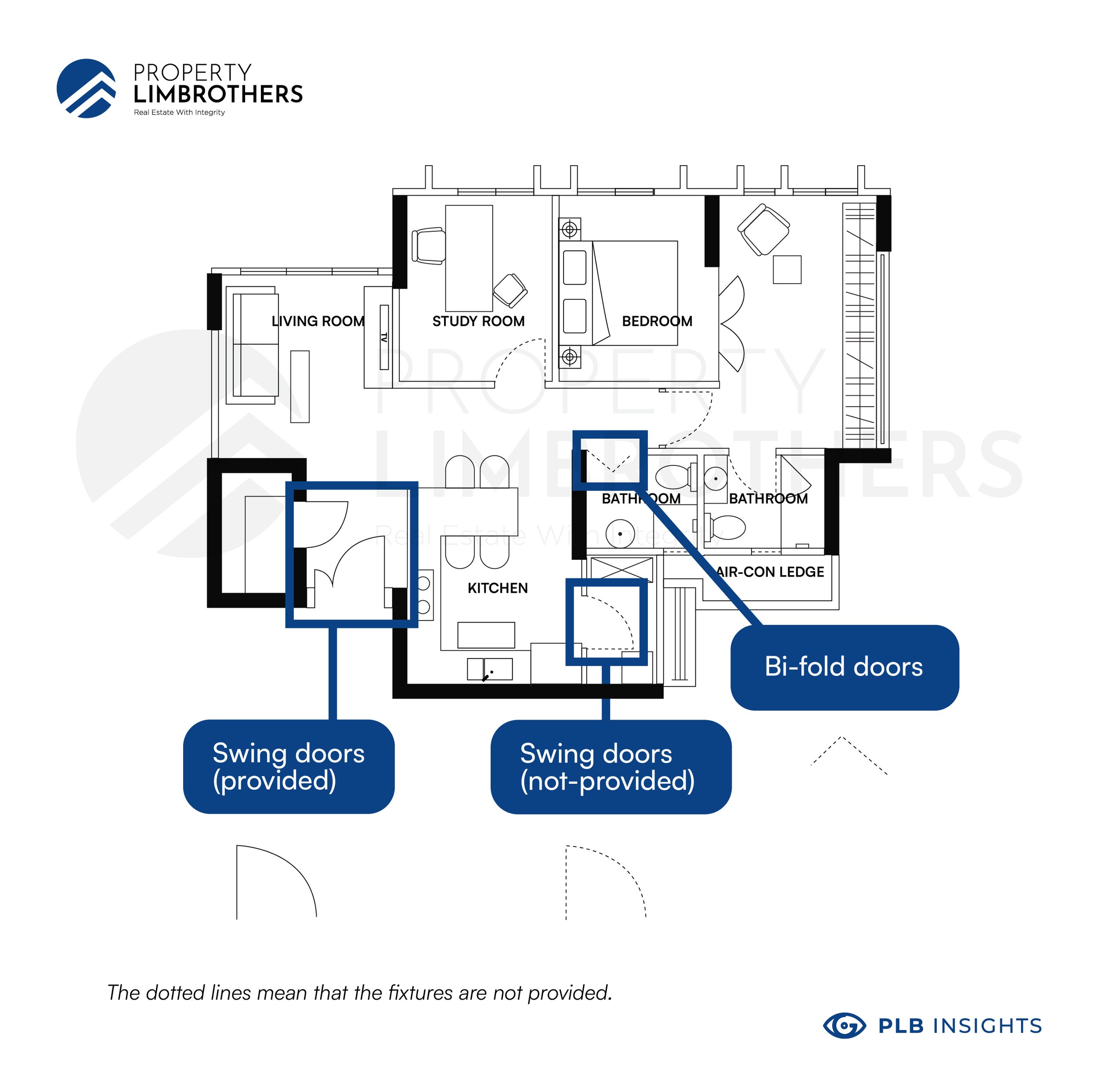
1. Swing Doors
Swing doors are represented by a quarter circle, indicating the direction and the radius of the swing.
2. Folding Doors
Identified by a “V” or triangular symbols, these doors are typically the doors leading to bathrooms, service yards or other tightly packed areas, providing an elegant solution to privacy without taking up too much space.
3. Doors Provided
Door symbols with a solid outline indicate that the developer will provide the door.
For an HDB BTO, these are usually the household shelter doors and service yard bi-fold doors.
While dotted outlines indicate that the door is not provided unless, in the case of HDB BTOs, you have signed up for the Optional Component Scheme.
Windows – Let There Be Light
1. Sliding windows

Sliding windows are indicated on the floor plan by alternating rectangular boxes.
2. Casement windows
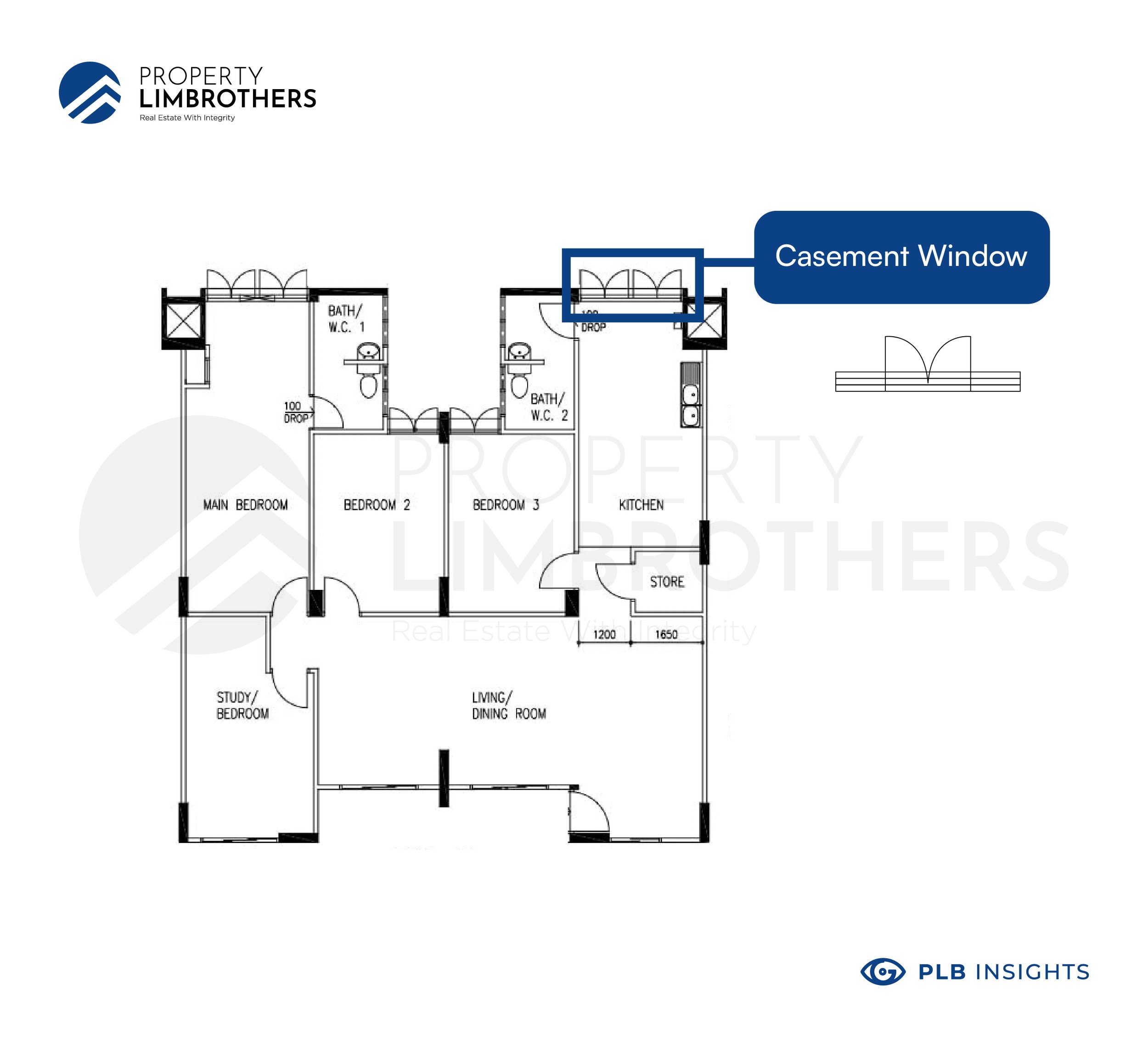
A standard fixture in the modern-day BTOs, casement windows are windows that swing outwards and are represented similar to doors – by quarter circles.
3. Top-hung windows
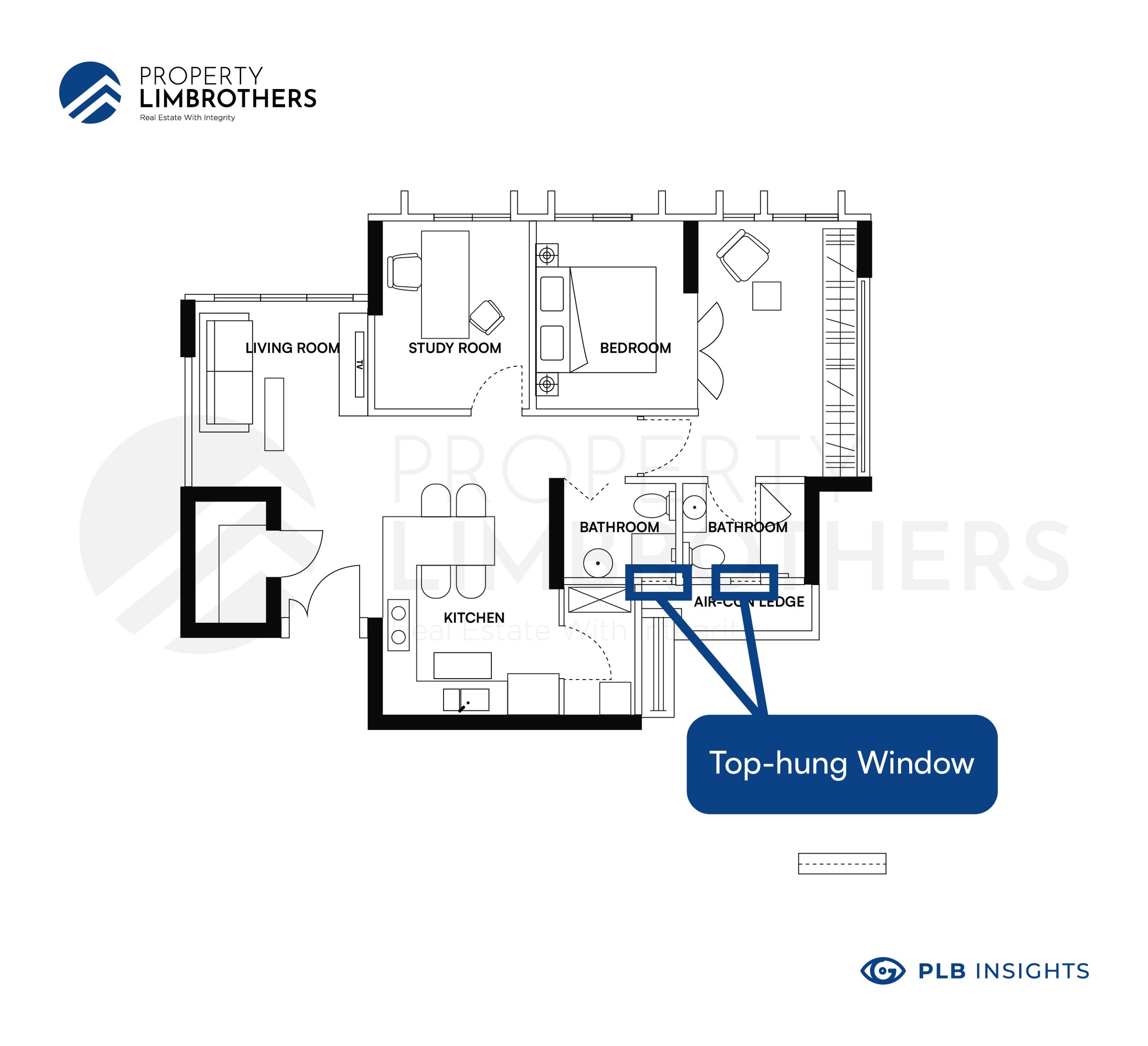
These smaller windows are fixtures used to ventilate rooms and are typically found in bathrooms, represented by a small rectangle with dotted lines across.
Other symbols you might find on a floor plan
1. Staircases

If you happen to be one of the fortunate few living in an HDB Maisonette or penthouse, you may be familiar with these symbols – a series of rectangles with an arrow indicating the upwards direction.
The number, accompanied by an “R” at the bottom of the steps, indicates the number of steps the staircase has.
2. Level Drops (typically 50/100mm level drops)
The height difference between flooring is indicated as a number, typically 50 or 100, followed by “drop”. For example: 50/100mm drop.
The number denotes the depth of the drop and is measured in millimetres (mm).
3. Laundry Racks
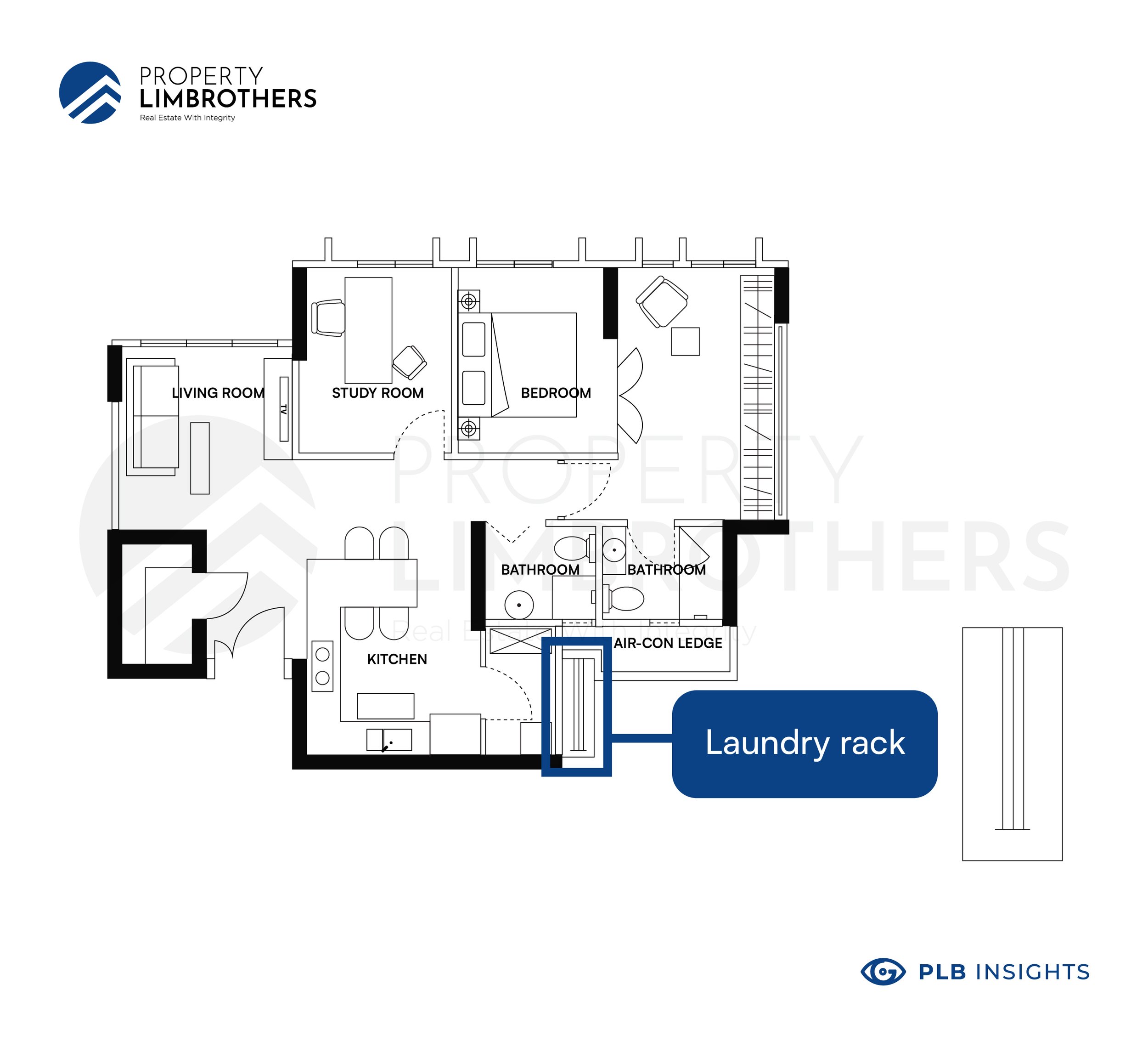
A triplet of lines on the floor plan indicates BTO HDBs’ laundry rack location.
Foreigners Take Note!
Here are some unique things to a home in Singapore that foreigners may have never heard of!
1. Bomb Shelters
As part of the Civil Defence Shelter Act 1997, it is mandatory for all buildings to have a household shelter either in the house itself or within the building.
HDBs built-in 1996 and onwards all have a household shelter within the house, and since the walls can’t be hacked or drilled, most Singaporeans use it as a storeroom for their seasonal items such as winter coats and golf clubs.
While it is still usable space, in smaller sized units, the presence of a household shelter has a more significant impact and diminishes the perceived living space and may take some time to get used to.
2. Private Enclosed Space (PES)
Private Enclosed Space (PES) is defined as a “Semi-Outdoor” area that forms part of the gross floor area.
Since what is considered as PES is still rather loosely defined – PES can refer to small ledges to huge patios on ground floor units that can fit sofa lounges.
The thing to note here is that as PES falls under the gross floor area, you are paying for this area.
3. Aircon-ledges
Unfortunately, aircon-ledges, although not liveable space, are considered under the gross floor area; hence you are paying for these areas.
Thus it would be good to note how much space the air-con ledges take up out of the total gross floor area.
Other quirky floor plans that you might consider
Dual Key Units
Dual Key units are exactly what the name implies! Dual key units are a single apartment that has been segmented into two, typically as one main apartment and another separate studio unit.
First introduced in 2009, it has become increasingly popular and made available in new launches but still accounts for a minute amount of Singapore’s condos. Its rarity, coupled with the fact that Dual Key Units essentially bypasses Singapore’s Additional Buyer’s Stamp Duty laws, it should come as no surprise that they are in demand and will very likely continue their rise in popularity. This is on top of the fact that the Additional Buyer’s Stamp Duty has recently been upped a considerable amount.
Triplex Penthouses
While many recall penthouses as luxury apartments on the top floor of condos with a private roof terrace – making it an apartment with two stories – there are actually penthouses with three stories!
Ideal for those looking to separate living, sleep and communal areas, the additional story gives another layer of lifestyle separation – giving breadth to new renovation and lifestyle ideas!
However, this layout may not be future-proof, considering the number of steps you’ll have to climb. While owners do have the option of adding a private lift, and in some cases, it is already provided!
So what exactly makes a good floor plan?
With the bare basics of reading a floor plan covered, you might wonder what exactly makes a floor plan suitable.
How exactly does one measure the efficiency of the layout, and are there layouts too efficient to the point where it is not pleasing to the eye?
Dumbbell layout?
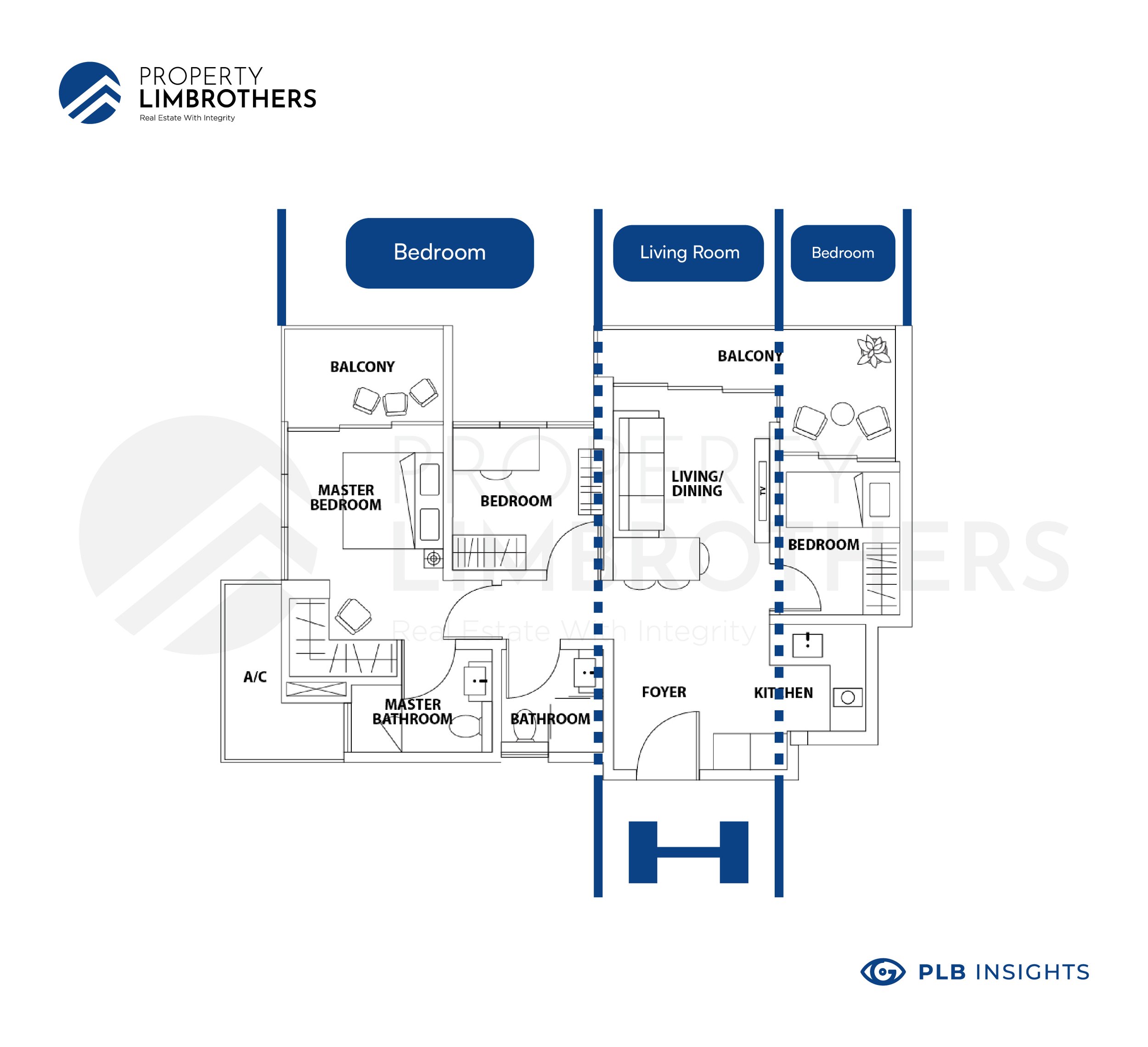
You may have heard this term thrown around in our Signature Home Tours, but have left you scratching your head – “huh, what’s that?”.
Dumbbell layout refers to floor plans where the bedrooms are tucked on each polar side of the house, sandwiching the living and dining area. This layout eliminates the need for long corridor walkways, thus making it one of the most efficient layouts.
However, some prefer the long corridor walkway to the master bedroom, which gives additional privacy being secluded away from the living areas. This also helps with the noise distribution. With the rooms tucked away in a corner, they’re less likely to be affected by the noises from the living areas.
Resale vs BTO Floor Plans
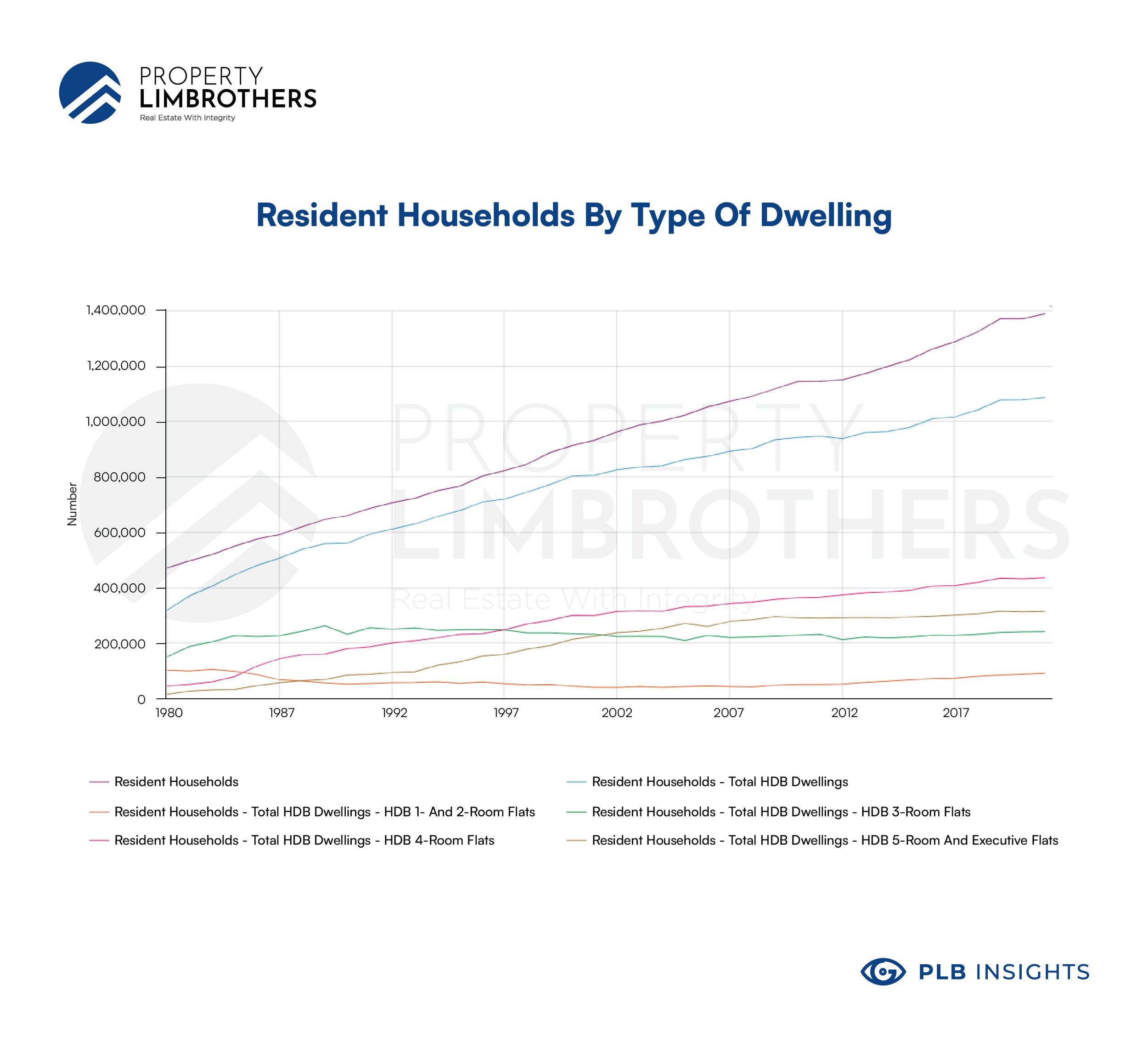
With the highest proportion of Residential households living in HDB 4-Room Flats, let us compare a 4-Room Resale and 4-Room BTO to get a feel for the differences in floor plans, if any.
Current BTOs
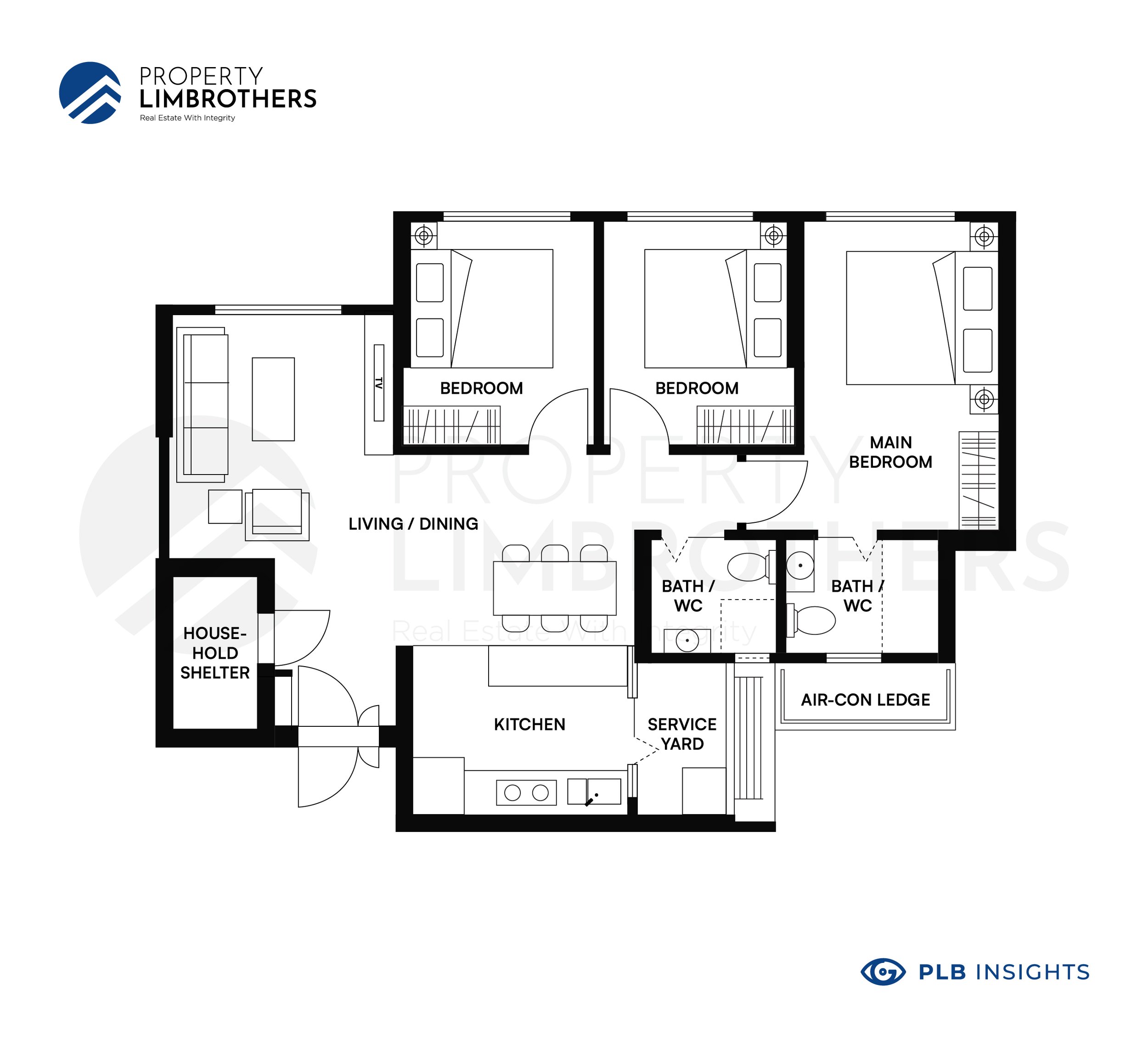
4-Room Floor Plan for Dakota Crest, following the concept of having a long walkway to connect the bedrooms to the living area, giving a privacy-forward layout.
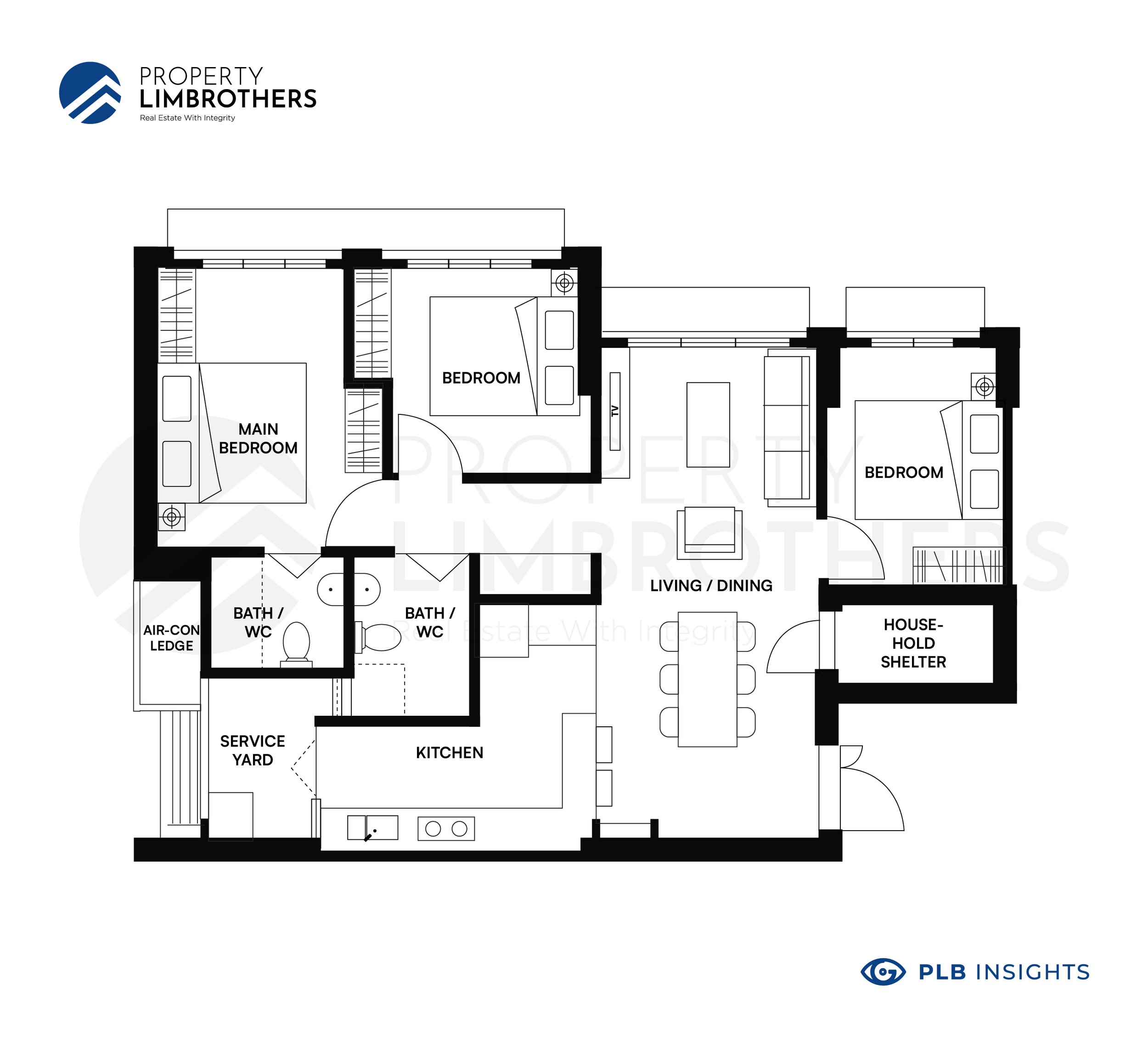
4-Room Floor Plan for Waterfront at Northshore I & II, follow a “dumbbell” layout, coupled with an open kitchen concept.
Resale HDBs: Late 1990s to Early 2000s

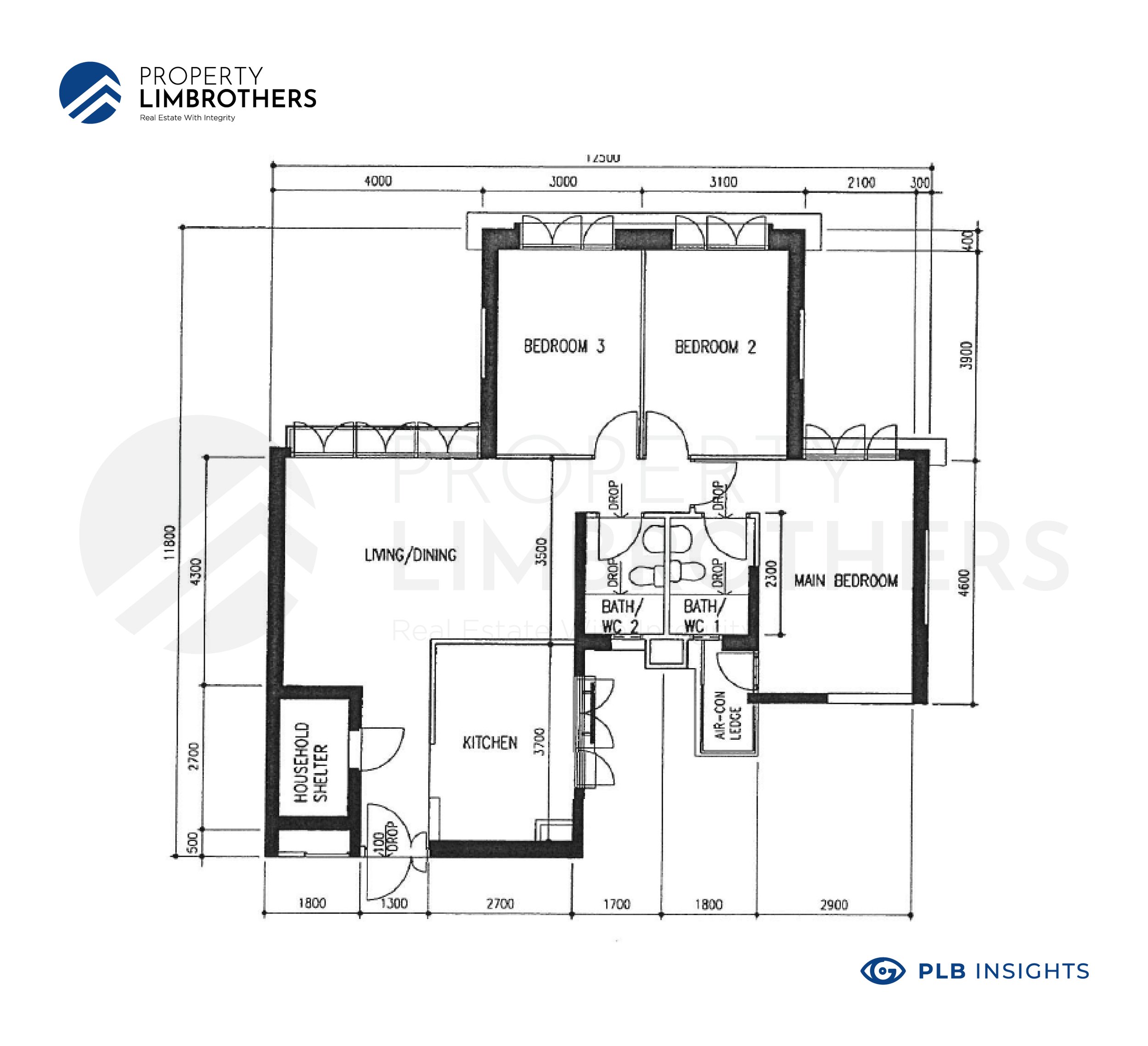
While the immediate disparity between Resale HDBs and current BTOs is the size, there are also subtle differences in the stylistic choice of the layouts.
A more peculiar find is that in the past, there was no clear distinction in size differences between the bedrooms; the master bedrooms were of the same or similarly sized with the other bedrooms. However, these days, ordinary bedrooms are considerably smaller than the master bedroom these days.
Over the years, the long “fashion runway” in homes started to see its place in the modern BTO layout, probably in an attempt to give more privacy to the master bedroom.
These days, an open kitchen concept seems to be in trend and here to stay for future BTOs as well, with HDB giving the option to enclose the kitchen with an additional partition.
Resale BTOs also come with a household shelter that cannot be altered – no drilling or hacking! The Civil Defence Shelter Act only came into effect in 1997; hence the older resale HDBs only came with a small storeroom that could be hacked downed to make way for more living space.
So if you’re adamant about finding a house that does not have a household shelter, you will have more luck finding HDBs older built before 1997, and some condos which utilise the common staircase as the household shelter.
While the subtle differences from home to home can make it or break it on what entails as a good floor plan, at the end of the day, a great floor plan is one that suits your lifestyle needs!
A great floor plan now, but will it be in 10-20 years?
The sustainability of the floor plan is another crucial point for consideration.
While multi-story homes can be a dream of yours to live in, it might not be so when you’re older, and stairs become an issue. While the option of adding elevators down the road can be a solution, not all units can accommodate or gain approval from the relevant authorities.
And we have yet to consider the renovation cost, operating cost and effort it requires to gain approval.
The same can be said for the size of the unit as well. While a cosy small apartment is enough now, that might not be the case for when you have a family and have children.
Floor Plans, Your Plans
Hopefully, this article has helped you understand how floor plans can help with your home purchase journey!
If you have not caught up with the recent revision of the cooling measures, check it out here!
Need more guidance to navigate your property purchase in Singapore? Feel free to reach out to our team. Click here to contact us now!
Previously we talked about The Metaverse, NFTs, Crypto and Its Role in the Future of Real Estate; click to find out more!
Are you curious about the History of Growth in Singapore’s Real Estate Market? We delve into that in our insights article here!



